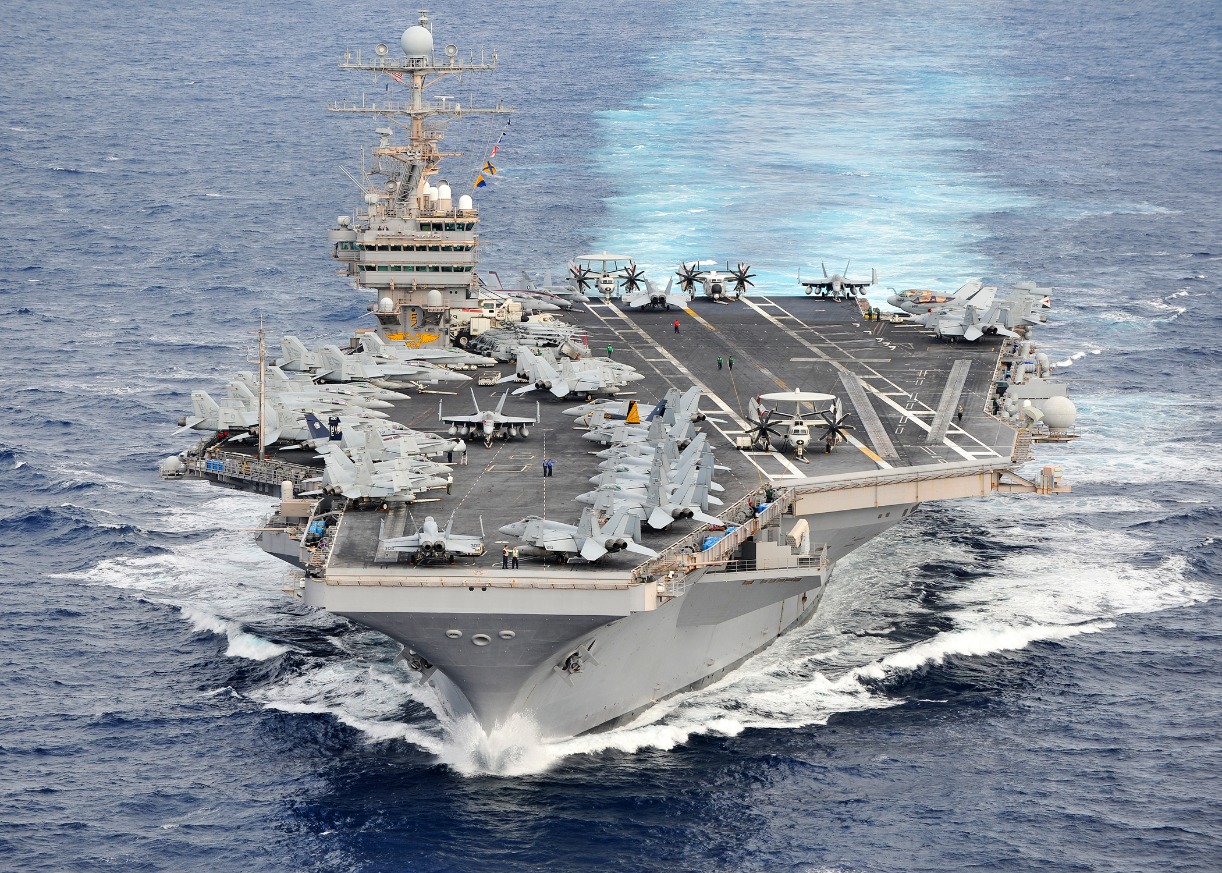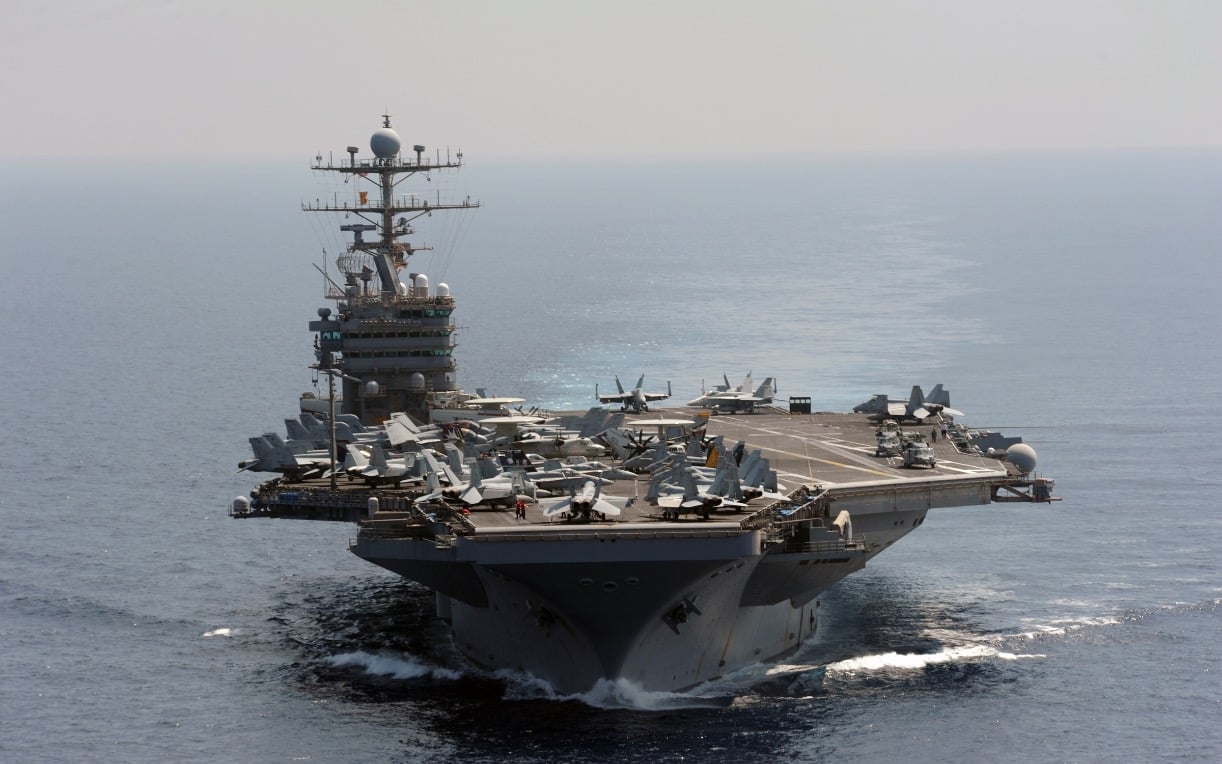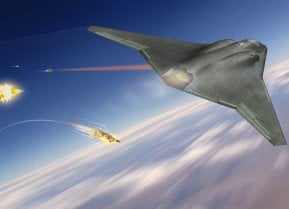The Houthis Are Freaked: Aircraft Carrier USS Abraham Lincoln Is Headed to Red Sea
The USS Abraham Lincoln (CVN-72) is on its way to the Red Sea to relieve the USS Theodore Roosevelt (CVN-71) as part of the U.S. Navy's ongoing carrier rotations in the Middle East.
Summary and Key Points: The USS Abraham Lincoln (CVN-72) is on its way to the Red Sea to relieve the USS Theodore Roosevelt (CVN-71) as part of the U.S. Navy's ongoing carrier rotations in the Middle East.

-This comes amid increased tensions in the region following Israel's actions against Hamas and Hezbollah leaders, as well as the Houthis, who have been firing missiles.
-The carrier rotation highlights the U.S. Navy's struggle to maintain a consistent presence with its nuclear-powered supercarriers, which are stretched thin across multiple global hotspots. With the deployment of CVN-72, the Navy continues to juggle its limited carrier resources, emphasizing the challenges of sustaining long-term operations.
Aircraft Carrier Swap – USS Abraham Lincoln is on the Way to the Red Sea
The United States Navy's West Coast-based Nimitz-class nuclear-powered supercarrier USS Abraham Lincoln (CVN-72) is now on her way from the Pacific to the Red Sea, where she will relieve her sister carrier, the USS Theodore Roosevelt (CVN-71). It was just weeks ago that CVN-71 arrived in the 5th Fleet area of operation, taking over for another Nimitz-class carrier, USS Dwight D. Eisenhower (CVN-69).
"To maintain a carrier strike group presence in the Middle East, the Secretary has ordered the Lincoln Carrier Strike Group to replace the Theodore Roosevelt Carrier Strike Group, currently on deployment in the Central Command area of responsibility," the U.S. Department of Defense said in a statement, adding that Secretary of Defense Lloyd Austin, "has ordered additional ballistic missile defense-capable cruisers and destroyers to the U.S. European Command and U.S. Central Command regions. The Department is also taking steps to increase our readiness to deploy additional land-based ballistic missile defense."
Exactly when the transition between the two carrier strike groups will occur, but US Naval Institute (USNI) News reported that it will likely take CVN-72 about two weeks to cross the Pacific and Indian Oceans. It also isn't fully clear how long the West Coast-based carrier will remain in the waters of the Middle East, but already, the U.S. Navy is preparing to send USS Harry S. Truman (CVN-75) to the region after she completes pre-deployment training.
The rotation of carriers serves to highlight how stretched thin the United States is right now. USS Dwight D. Eisenhower had seen her deployment extended twice, and the decision was made to send USS Theodore Roosevelt to the region to prevent a third extension. However, CVN-71 has also been deployed since January 11, 2024, and is due to return home soon.
Houthis and More: Regional Tinderbox in Red Sea
There has been the presence of a U.S. Navy CSG in the Middle East since last fall after the Hamas terrorist attack on southern Israel last October as well as missile attacks from the Houthis. The USS Gerald R. Ford (CVN-78) was sent to the Eastern Mediterranean in response, and the lead vessel of the U.S. Navy's new class of supercarriers saw her deployments also extended twice.
The Pentagon is preparing a "multiple forthcoming force posture," which comes in response to Israel's assassination of Hamas and Hezbollah leaders in Tehran and Beirut respectively.
Officials from Hamas, and Hezbollah, as well as those from the Islamic Jihad and Yemeni-based Houthi rebels – also backed by Tehran – met on Thursday with top Iranian government officials. There are now fears that the Iran-back militant groups, as well as the Islamic Republic, could respond by launching additional attacks, possibly escalating the ongoing Gaza conflict into a full-blown regional war.

"The Secretary of Defense has reiterated that the United States will protect our personnel and interests in the region, including our ironclad commitment to the defense of Israel," the Pentagon added.
The Aircraft Carrier Gap
The deployment of CVN-71 to the Middle East has left in the Indo-Pacific and served to highlight the U.S. Navy's "Achilles Heel" – namely that there simply aren't enough warships to go around. As noted, the U.S. Navy extended the deployment of CVN-69 multiple times and the warship and her crew were pushed hard as a result.
Exactly how stretched thin the U.S. Navy's carrier fleet has only come into focus as the sea service must deal with multiple threats at the same time. Even as CVN-69 has returned home from the Red Sea, CVN-71 will remain in the region for a few more weeks, with CVN-72 acting as a stopgap until USS Harry S. Truman finally arrives in the region.
The United States Navy is now forced to play an increasingly complex game of musical chairs with its operational carriers. It may technically operate eleven nuclear-powered supercarriers – ten Nimitz class and one Gerald R. Ford class – but rarely are more than five or six at sea at any given time.

Long deployments mean longer time undergoing maintenance, and the problem is made worse by the state of the U.S. carrier industrial base, which builds and maintains the vessels, including the lack of shipyards. Nuclear-powered carriers are also taking longer to build, are costly to maintain, and then costly and complex to retire. Worst of all, there may not be enough of them in service!
Author Experience and Expertise: Peter Suciu
Peter Suciu is a Michigan-based writer. He has contributed to more than four dozen magazines, newspapers, and websites with over 3,200 published pieces over a twenty-year career in journalism. He regularly writes about military hardware, firearms history, cybersecurity, politics, and international affairs. Peter is also a Contributing Writer for Forbes and Clearance Jobs. You can follow him on Twitter: @PeterSuciu. You can email the author: [email protected].
Image Credit: Creative Commons and/or Shutterstock.


